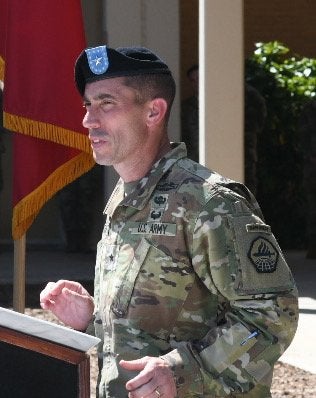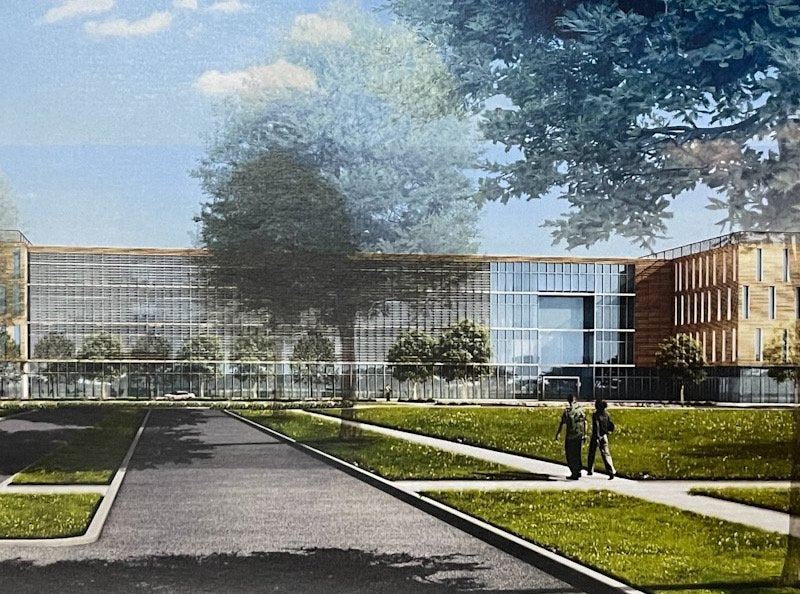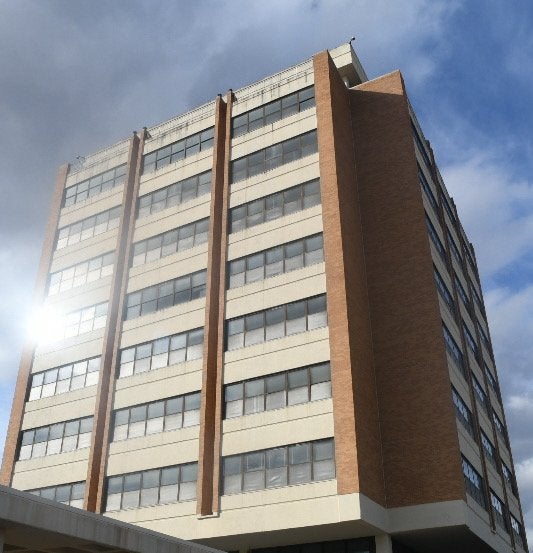When Brig. Gen. Paul Stanton took command at Fort Gordon, he soon realized the iconic Signal Towers complex would be demolished on his watch.
“I had a pit in my stomach,” Stanton said Friday to a large crowd of soldiers, civilian Department of the Army employees and retirees who attended an afternoon ceremony to mark the end of an era on Fort Gordon.
“I was going to be responsible for bringing down the iconic symbol of the Signal Corps,” he added.

But the one-star general said he soon learned the 54-year-old building would be replaced by a modernized Signal and cyber headquarters and campus for the men and women learning communication skills and computer network defense.
“We are evolving and changing with the times,” Stanton said.
It was a sentiment echoed by a good number of men and women who had worked in the base’s main headquarters building, the 10-story Signal Towers.
There was Tom Clark, a civilian now and executive director of the Alliance for Fort Gordon. But in the years 2008 to 2011 he was Command Sgt. Maj. Clark, the highest ranking non-commissioned officer on Fort Gordon and the command sergeant major of the Signal Corps. He occupied a cavernous office on the 9th floor of the tower.
But during Friday’s memorialization ceremony he was all smiles, happy to see old friends and looking forward to the nearly $1 billion complex that will replace the Signal Towers and adjacent buildings.
“I think it’s progress,” Clark said. “We are progressing to be a world class campus and power projecting platform not only for the Army, but for the country.”

Next in line after Clark was Ron Pflieger, who was the Signal Regiment command sergeant major from 2011 to 2014.
“I had the full Fort Gordon view,” Pflieger said, sweeping his stocky arm across the empty office tower and looking out across the skeleton of a new building going up.
Pflieger actually had a better view of Fort Gordon than most. With 210 airborne jumps, his very last in the Army was at Barton Field on Fort Gordon. He has a photo his daughter took that shows him about to land with a Blackhawk helicopter flying low across Barton Field in the background of the photo.
“It’s time for new progress,” Pflieger said. “We got to keep up with the pace of the Army.”
The last to leave the Signal Towers 9th floor office was Command Sgt. Maj. Delia Quintero, the leader of non-commissioned officers for the Signal Regiment, the Cyber Corps and the post.
“There’s a lot of emotion tied to this,” she said. “It’s bitter sweet.”
But the retirees and other nostalgic types also see the improvements on Fort Gordon. The new headquarters is just one part. There are better roads, an improved post exchange, a wide entry gate that cuts a morning wait to get on post from 20 minutes to two, she said.
At the end of Friday’s ceremony, Clark, Pflieger and Quintero joined Stanton and Maj. Gen. Neil Hersey. The group donned construction helmets, safety glasses and bashed the Signal Towers brick wall with sledge hammers. The effort left a few barely noticeable dings in the brick wall.
It seems it will take a great deal more to take down the symbol of the Signal Corps.
Joshua B. Good is a staff reporter covering Columbia County and military/veterans’ issues for The Augusta Press. Reach him at joshua@theaugustapress.com










